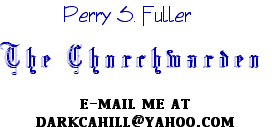


THE FRUGAL FLY FISHERMAN
+
DOUBLE-TAPERED FLY LINES
(particularly those bought dirt cheap at
fly fishing shows and bargain basements)The main function of a fly line is to get the fly from the tip of your tippet to the snout of a trout without scaring the poor creature into years of psychological counseling. There is no mystery here, just the straight forward conveyance of fur and feathers from point A to point B. Any string, weight-forward or double-tapered, that slings seduction from you to the fish with subtlety and finesse is doing precisely what every fly line under the sun is designed to do.
Weight-forwards certainly have some desirable characteristics--distance and wind resistance readily come to mind--but cost effectiveness is not one of them. Most quality fly lines can eat up a fifty dollar bill quicker than a brookie can bang a Blue-winged Olive. Multiply fifty bucks by the number of three, four and five weight rods you own and the figures could soon add up to an awful lot of squirming before an unsympathetic spouse. The unique benefit of the double-tapered alternative is the all important feature of reversibility, thus enabling the enjoyment of two lines for the marriage-saving price of just one. When the weight-forward version wears out you are forced to toss it into the trash (or employ it as a sub-surface sinker). However, when the current casting end of a double-taper becomes cracked and crevassed all is not lost. The line can be turned around and used for a few more seasons since the taper that was spooled on your reel is still as good as new.
In my humble opinion too much is made of distance, at least with reference to eastern streams and rivers. Typically, the vast majority of your finned adversaries will be caught within a fifteen yard radius from where you are standing. Anybody with a modest amount of skill should be able to lay out every inch of 45 feet with no problem, regardless of how the line is shaped. For trout fishing then, there is really no substantial advantage to a weight-forward line over a double-taper unless, of course, you are fishing on a really windy day. Yet, the opposite judgment is not necessarily true. A double-taper will roll cast much easier, and land a fly on the water with far greater delicacy than its weight-forward counterpart. Also, for what it may be worth, I have discovered that cane and glass handle a DT extremely well. Furthermore, these lines can be purchased at dirt cheap prices. Orvis occasionally has a bunch of them in the bargain basement of the Manchester store, usually at fifteen dollars apiece. Also, fly fishing shows can be a rich resource for the astute angler. While everyone else is grabbing up the discounted weight-forward lines (another pretty good value, by the way) keep an eye out for those DT's. There should be several left for you because nobody else wants them. Earlier this year, for example, I bought a few at a show for ten bucks apiece. Not a bad deal, especially for the frugal fly fisherman.
As you well know, fast rods generally require a weight-forward line. If your stick is quick, simply ignore my advice. Otherwise, give the DT recommendation an honest trial. If it works out to your satisfaction, the money you save on fly lines can be spent on something far more important�namely, bamboo fly rods.

John 14:6
Jesus said to him, "I am the way, the truth, and the life. No one comes to the Father except through Me."
back to Churchwarden front page
01-00 index
02-00 index
03-00 index
04-00 index
05-00 index
06-00 index
07-00 index
08-00 index
09-00 index
10-00 index
11-00 index
�copyright 2000, Perry Fuller
Website author is a member of

